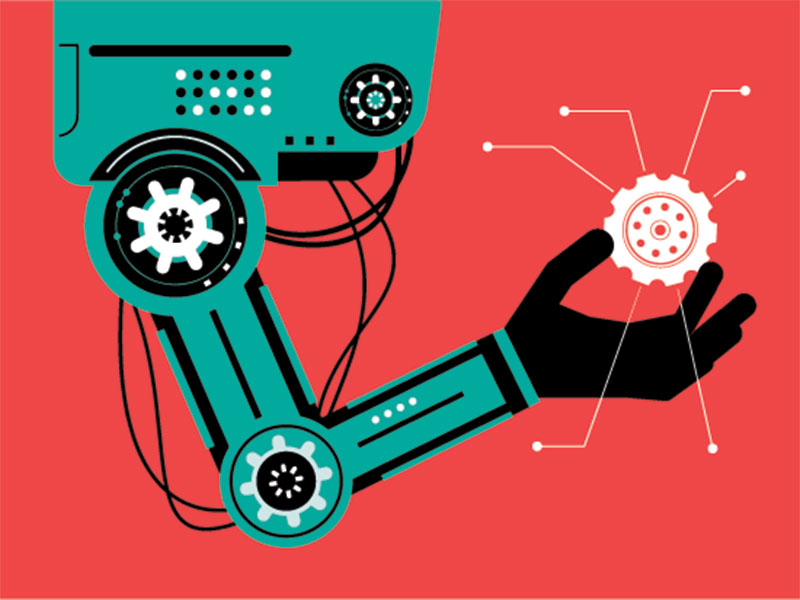
The age of automation is radically disrupting work as we know it. By 2022, seventy-five million jobs in 20 economies are expected to disappear, just as 133 million new jobs are created. And by 2030, McKinsey predicts that 375 million workers will need to find new work, as automation increasingly takes over traditionally human tasks.
Coping with this unprecedented change will require both a new way of working and what the World Economic Forum (WEF) and others are calling a “reskilling revolution.” WEF research suggests that, at minimum, 54% of all workers will need either reskilling or upskilling by 2022.
Fortunately, some organizations are already aware of this urgent need. Research by McKinsey discovered that 66% of surveyed executives saw “‘addressing potential skills gaps related to automation/digitization’ within their workforces as at least a ‘top-ten priority.’” A few organizations are even ahead of the reskilling curve, already making investments in programs designed to prepare workers for new roles:
- JPMorgan Chase invested $350 million in a five-year global initiative called New Skills at Work. The investment will create new training programs, bolster collaboration and communication, enable research, and build upskilling opportunities.
- Amazon’s Upskilling 2025 will reskill 100,000 workers by 2025. An investment of $700 million is earmarked for reskilling employees across all areas of the organization, including corporate, warehouse, retail, and transportation.
- AT&T has invested one billion dollars in Future Ready, an internal program designed to reskill more than 100,000 workers.
The risk of not reskilling

JPMorgan Chase, Amazon, and AT&T know that keeping pace with the age of automation will require employees who are agile, flexible, and adept at learning. But what will happen to organizations that don’t address the need to reskill the workforce?
Organizations slow to adapt won’t fall behind overnight. They’ll fall behind slowly until it’s too late to catch up. The problem is, with the age of automation, that if you get behind on something this big—reskilling— you can’t double or triple your pace to keep up. People can’t adapt that fast. And organizations probably don’t have enough money to buy all the talent they need.
Five action steps to take now to address reskilling for the age of automation:

- Identify the risk areas for automation. Certain areas will be obvious—rote processes, tasks that can be done faster and more efficiently via automation. Other areas won’t be as obvious: Experts predict that jobs such as insurance underwriting, pharmaceutical discovery, and long-haul trucking will be automated by 2030.
- Identify what skills the company needs to succeed long term. Look at what the organization needs to continue existing work, as well as expand into new areas of work. What challenges are showing up in the marketplace and what key skills will help overcome those challenges?
- Examine existing employee skills. Can employees transition to different areas of the organization or will they need to be completely reskilled? If they need to be reskilled, do they currently lack hard or soft skills? Can new skills be learned on the job or will employees need formal training, and if so, for how long?
- Determine the right training for the right skill. While videos and microlearning are useful for just-in-time learning, effective reskilling in the age of automation will require far more than a library of courses. Technology and self-paced courses have a role to play, just not the starring one. A mix of learning modalities—instructor-led, microlearning, coaching mentoring—will provide employees with the best opportunity to learn and retain complex skills.
- Communicate with everyone. Every employee at every level needs to understand how critical reskilling is to the future of the organization, and by extension, their own futures. Informing all stakeholders on a regular basis about the organization’s plans for the future can alleviate the fear of change and job loss, thus keeping employees motivated and engaged.
Wait and see? Or act now?

For organizations that want to remain competitive in the age of automation, a “wait and see” approach isn’t a viable option. It’s death by a thousand cuts for companies that don’t start to change now.
But getting started doesn’t require a major investment. I recommend organizations begin today by making small adjustments in the right direction—adjustments that over time add up to successful and sustainable change. Figure out the skills you are going to need. Communicate with everyone about upcoming changes. And use the right training for the right skill. Create small course corrections now so that your organization is on the right track and employees are more adaptable and engaged.






